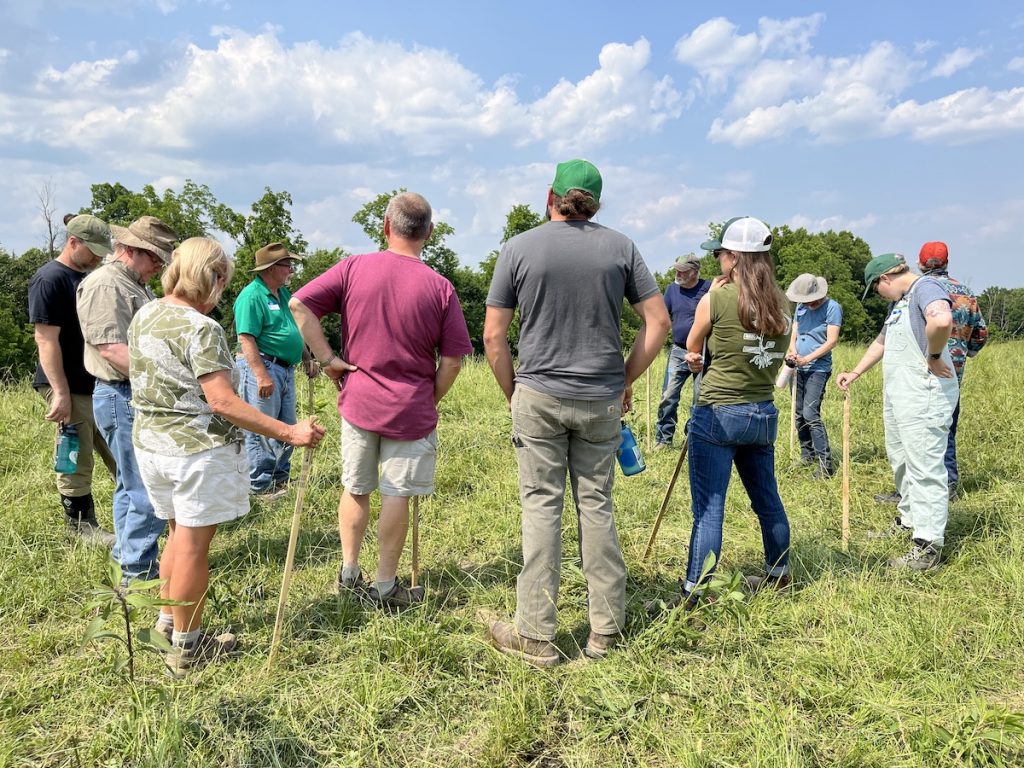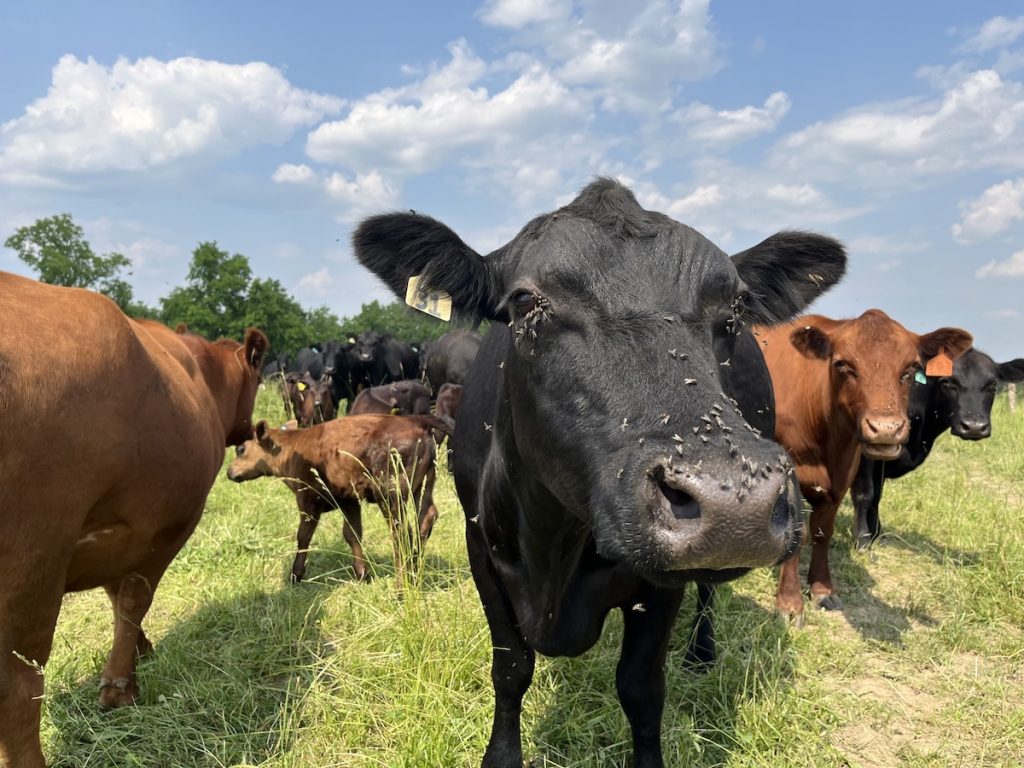A pasture tour teaches sustainability practices to southeast Ohio farmers
By: Morgan Anderson
Posted on:
STOCKPORT, Ohio (WOUB) — As the sun peaked behind the mid-day clouds, Bob Hendershot led a group of southeast Ohio farmers through a pasture and then stopped to point at the cattle perched at the top of the hill.
“When I wake up in the morning, I don’t think about how I’ll work for the farm, but instead, how the farm will work for me,” Hendershot said.
He continued his march onward up the hill with the rest of his tour group trailing behind him. The pasture walk took place on June 9 at Pete and Marjie Shew’s cattle farm in Morgan County, which sits on about 100 acres. The Shews have raised grass-fed and grass-finished Angus beef since 1979, making their passion both a lifestyle and a source of income.
The Shews’ lifestyle is one that left many of the tour attendees wondering how. Hendershot said it relies on good practice.
“It all goes back to conserving the soil. That’s our basic resource,” Hendershot said.
Maintain good pastures and the rest will do what it needs to do, he said.
By having fast-growing and nutrient-dense grasses in the pastures, livestock can get ample nutrients with each and every bite. This in turn leads to a healthy digestive system where manure can be spread just by the animals roaming. By having the manure spread throughout the pasture, it then fertilizes the grass for it to grow again.
A simple concept, but one that Hendershot believes is often overlooked.
“Improving the soil is part of my heart and soul,” he said.

He was named the nation’s Outstanding Pastureland Conservationist by the NRCS in 1999. In 1998, he was inducted into the Ohio State Conservationist Hall of Fame and was presented the NRCS Regional Grazing Lands Conservation Initiative support award in 1996.
Although Hendershot is now retired, he still works part time with the Ohio Department of Agriculture’s Division of Soil & Water Conservation. He said pasture walks like these where he is working with people and answering questions are his passion.
“I enjoy sharing what I know and making it fun for those who are listening and putting it in a way they can understand,” Hendershot said. “Taking the science and putting it into systems that they can implement on their own farms.”
That science, as Hendershot mentioned, can look as simple as cutting your grass.
Once Hendershot and the tour group reached the top of the pasture hill, he bent down to pick up a blade of grass.
“Does this blade of grass look like it was cut with a sharp or jagged mower blade?” Hendershot asked.
As attendees rattled off answers, Hendershot explained why it matters. To have the fastest-growing and most nutrient-filled grass for cattle to graze on, you need a clean and sharp blade, Hendershot said. Similar to having a cut on your arm — a cut that is sharp like a razor as opposed to a jagged one with ridges will heal faster.

Rural Action is a membership-based nonprofit organization based in The Plains that works to provide the Appalachian Ohio region with environmental, social and economic resources. It hosts agricultural workshops that range from beekeeping and pasture walks to financial management.
The workshops follow a peer-to-peer learning method. The farmer opens up their farm to the public for a tour and, in turn, people can ask questions along the way. The workshop utilizes the farmer as both the educator and facilitator of the knowledge they have gained working hands-on in the industry, said Molly Sowash, sustainable agriculture manager at Rural Action and the event’s organizer.
“I think when there’s repeated exposure to the same topic you start to hear the same things and they come quicker to mind,” Sowash said. Learning from farmers who are in the same region, with similar terrain and soil types, is more relevant than attending workshops in some other parts of the state or watching YouTube videos from someone across the country.
This pasture walk was the first one to take place since the pandemic.
“This is hopefully kickstarting some more strong livestock programming that we can offer,” Sowash said.
For those interested in other events Rural Action hosts like its pasture walks, visit its website at ruralaction.org/rural-action-events or contact Molly Sowash via email at molly@ruralaction.org.

